Advancing Perinatal Health Work in Paterson
Black women do not feel seen or heard in their pregnancy journey, this is consistent through many healthcare experiences but amplified because of the vulnerability and intimacy that comes specifically during pregnancy/labor and delivery. “The closest a woman comes to death is when she’s giving birth.” states St. Joseph’s doula Jacki Thompson-Carlos as a way to express the spiritual and existential awakening that pregnancy can reveal. This exacerbates the lack of trust that many feel about healthcare system, especially with Black mothers.
Our approach to the design challenge of building trust within a safety net hospital is to amplify the voice of Black moms from Paterson. We do this by providing opportunities for birthing people to communicate actively with healthcare providers in clinical settings, advocate for themselves, and experience alternate ways of self-expression. While most interactions between moms and clinicians center on diagnostics and symptoms identification, we strengthen the narrative component of medicine so that both mothers and clinicians can engage in different kinds of conversations. As designers, the Center for Innovation [CFI] asks guided questions to generate maternal-centric stories that are curated to assess (and address) the overlapping needs of moms and clinicians.
We get people very involved in the design process. This is CFI’s ethos. We give them the tools, frameworks, and encouragement to explore and develop new ways to address the challenges they face in healthcare. While active collaboration is key to this process, high involvement and momentum requires extra time and support by SJH staff. This is currently not accounted for. Providers have laudable aspirations and motives to continue this work, but it's hard to be mentally involved at the level they expect upon themselves. An additional factor that contributes to the pacing of this work is the fact that St. Joseph’s staff are not paid extra for collaborating with us. Understaffing, large caseloads, and compensation play a big role in obstructing motivation. And while our collaborative approach is welcomed, we are learning how to throttle our efforts to ensure engagement without pushing involvement to a point of resentment. This, in turn, dictates the pace at which we work. We are understanding what it means to “work at the pace of trust.”
This collaborative process provides an interactive approach that uses dynamic exchanges between the people who are (to varying degrees) part of the health system. We carve out the time and space for people to explore their own narrative. We share examples as a means of safe exploration and modeling. This in turn, develops skills such as:
Storytelling to an audience, which develops confidence
Speaking up to clinicians about concerns, which promotes self-advocacy
Having two-way conversations in a clinical setting, which fosters empathy
Sharing beyond a diagnosis, which supports a more holistic approach to care
We build prototypes to address opportunities and observe the impact these “interventions” have on clinician interactions. The three sets of prototypes are – The Paterson Story Salon, the Inquisitor’s Card, and The Doula Connection.
The Paterson Story Salon


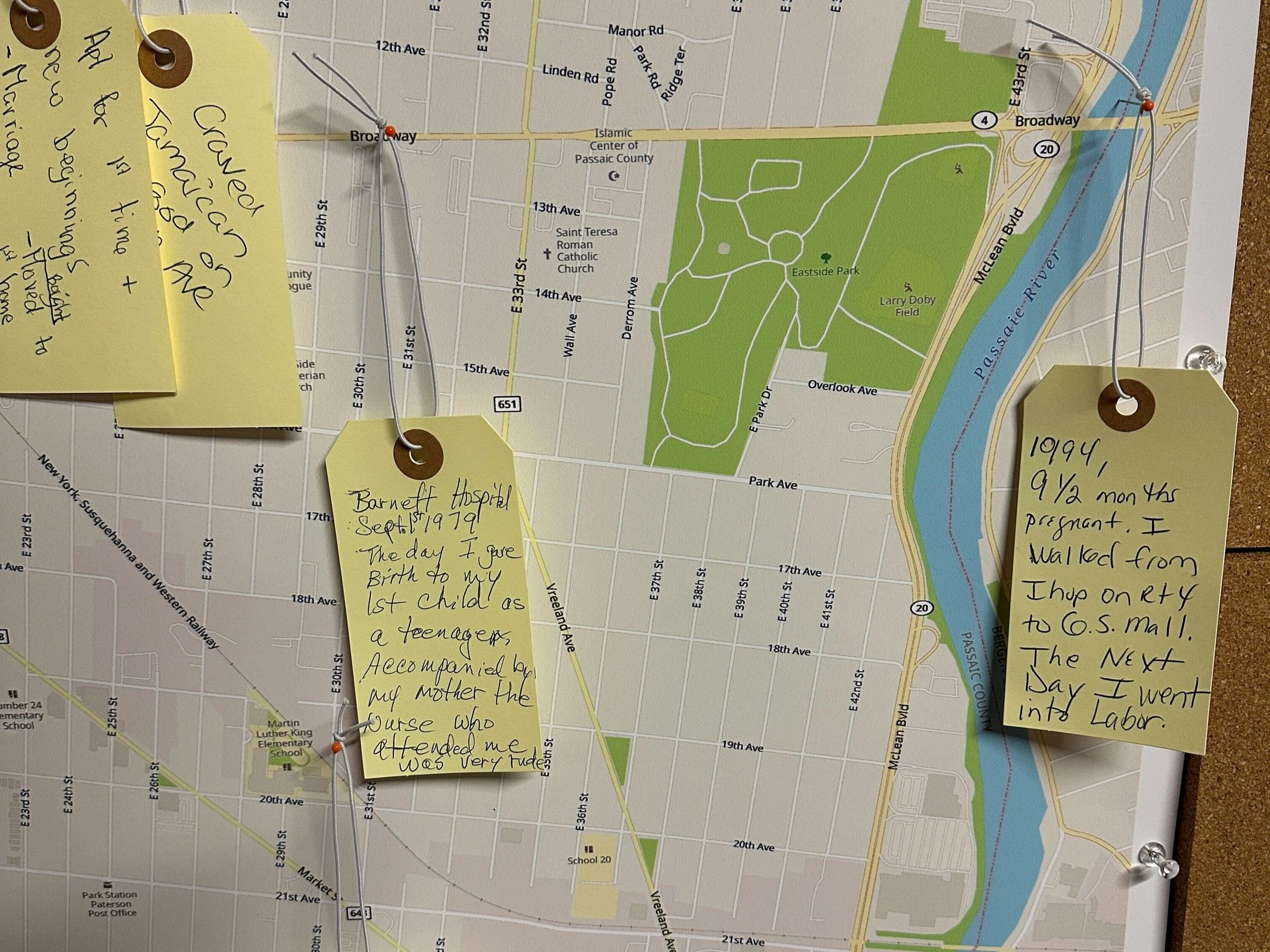
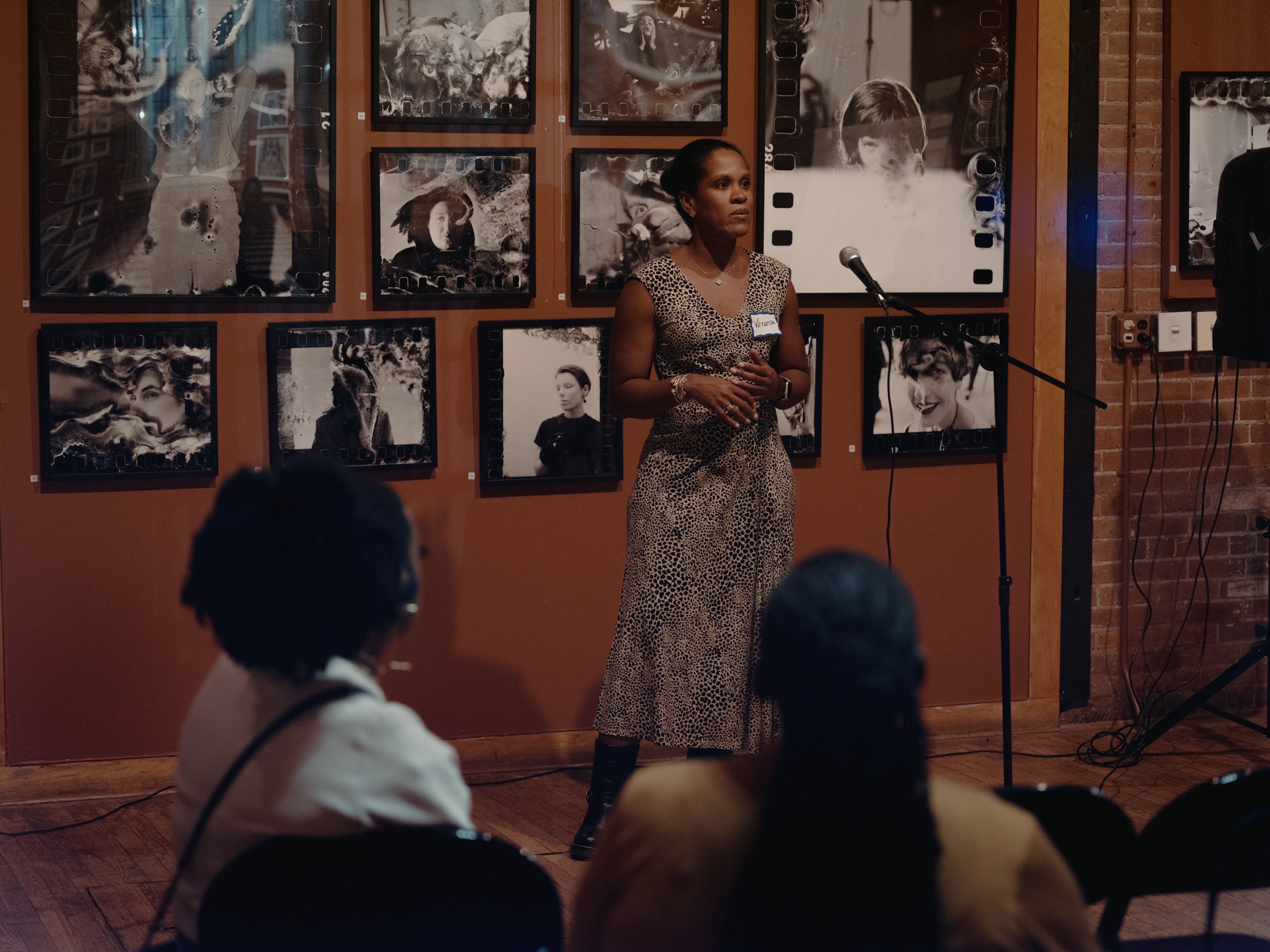


The Paterson Story Salon leverages the power of storytelling by providing mental and physical space for women to share personal experiences related to pregnancy and motherhood with members of the community. It centers around the communal aspect of storytelling as a cultural way of passing down oral information. The format attempts to break the cultural silos that exist outside institutions, private homes, etc. while reestablishing new types and forms of safe spaces.
The Paterson Story Salon invites people of all ages to participate in intergenerational narrative change. Participants, including clinicians, witness the exchange of varied stories that range in topic and emotional tone. CFI collaborates with two established community members Kashieka Phillips and Shanikwa Lemon, who work at The Partnership for Maternal and Childhood health and the Paterson Alliance, respectively. They help design the agenda, curate local speakers, and spread the word about the event. The two have also emceed the event, ensuring a community connection throughout. Location is also considered as a recent iteration took place in the Paterson Museum which provides a historical and locally focused atmosphere. Stories ranged from creating a foster care family, to building a community through breastfeeding, to advocating for yourself with doctors who don’t believe you.
One artifact that has come out of this experiential based prototype is a physical manifestation of stories on an interactive map. Here we gather stories from moms, grandparents, friends of moms, and others. Participants write personal thoughts or anecdotes about motherhood and pin them directly to a Paterson location. This map is a way for sharing stories while serving as a guidepost for identifying and addressing community-based needs around pregnancy and perinatal health.
What sets this approach apart from expected hospital led initiatives is a design choice to minimize the perceived presence of St. Joseph’s. We still consider this a prototype. By reducing the marketing components, we reduce the observational noise that they create. This enables us to better listen and observe what we believe makes this initiative successful. The emphasis is on Black maternal narratives and their equally diverse range of moments, attitudes, beliefs, and outcomes.
We believe in the power of stories and their ability to strengthen the sense of connection with the community. They can also be an important driver for decision making. This prototype encourages people to actively participate in sharing stories though different means. The intent is to develop a platform that invites people to openly share their narratives and deliver them in ways that can positively influence another’s future decisions on motherhood.
The Inquisitor’s Card



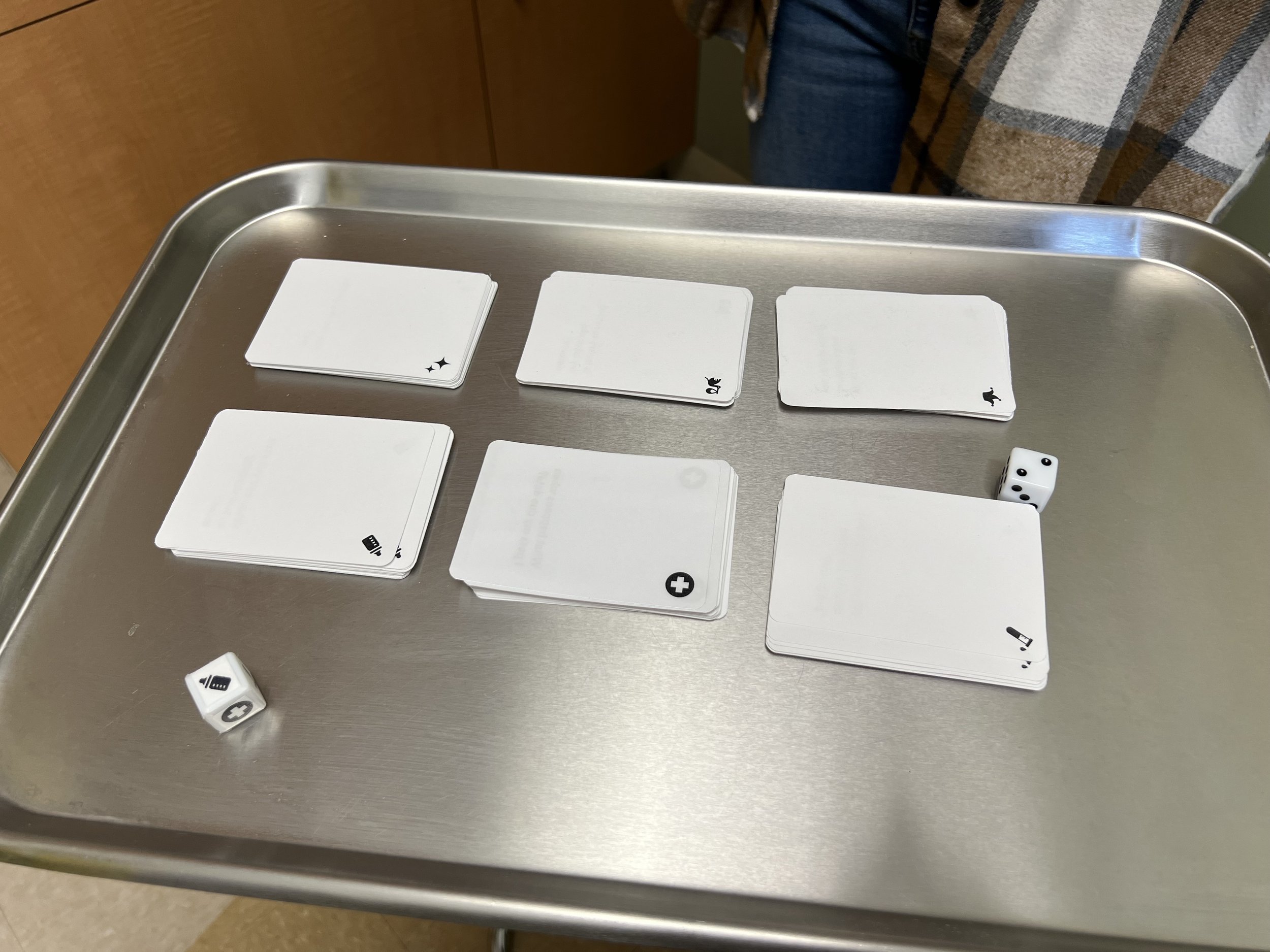
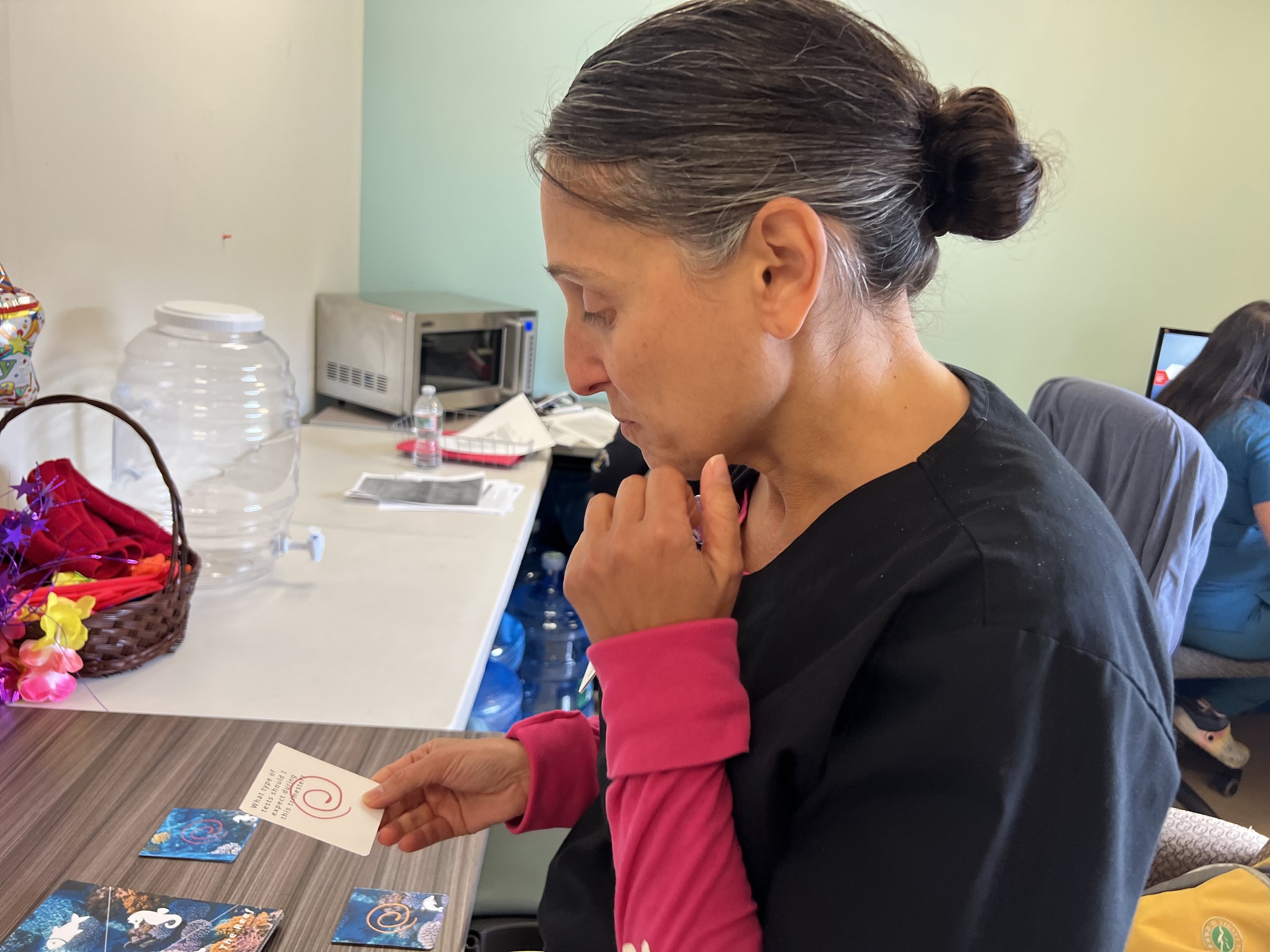
Many patients lack a sense of control in a clinical setting and may not feel they have the permission to speak up. Asking questions to providers is a way to create a more inclusive and personalized conversation that can reduce inhibition and support the internalization of information. The objective of this prototype is that patients leave feeling even more informed without feeling ‘brain drained ‘or ‘education dumped.’
The Inquisitors Card explores the use of game methodology to give clinician and patients a way to expand the range and type of questions they ask in the clinic.
People may not be accustomed to this type of exchange. Key goals of this initiative are to help normalize question asking in this setting and break the stereotype of what constitutes an appropriate question to ask clinicians. The game provides examples of unexpected questions and uses the excitement of chance to force question asking. A desired outcome is to have memorable answers that build a connection between patient and provider, reestablishing a different type of trust – beyond just “I trust clinicians to do their job well.” to “I really have a new sense of trust because our conversation was more intimate.”
The Doula Connection

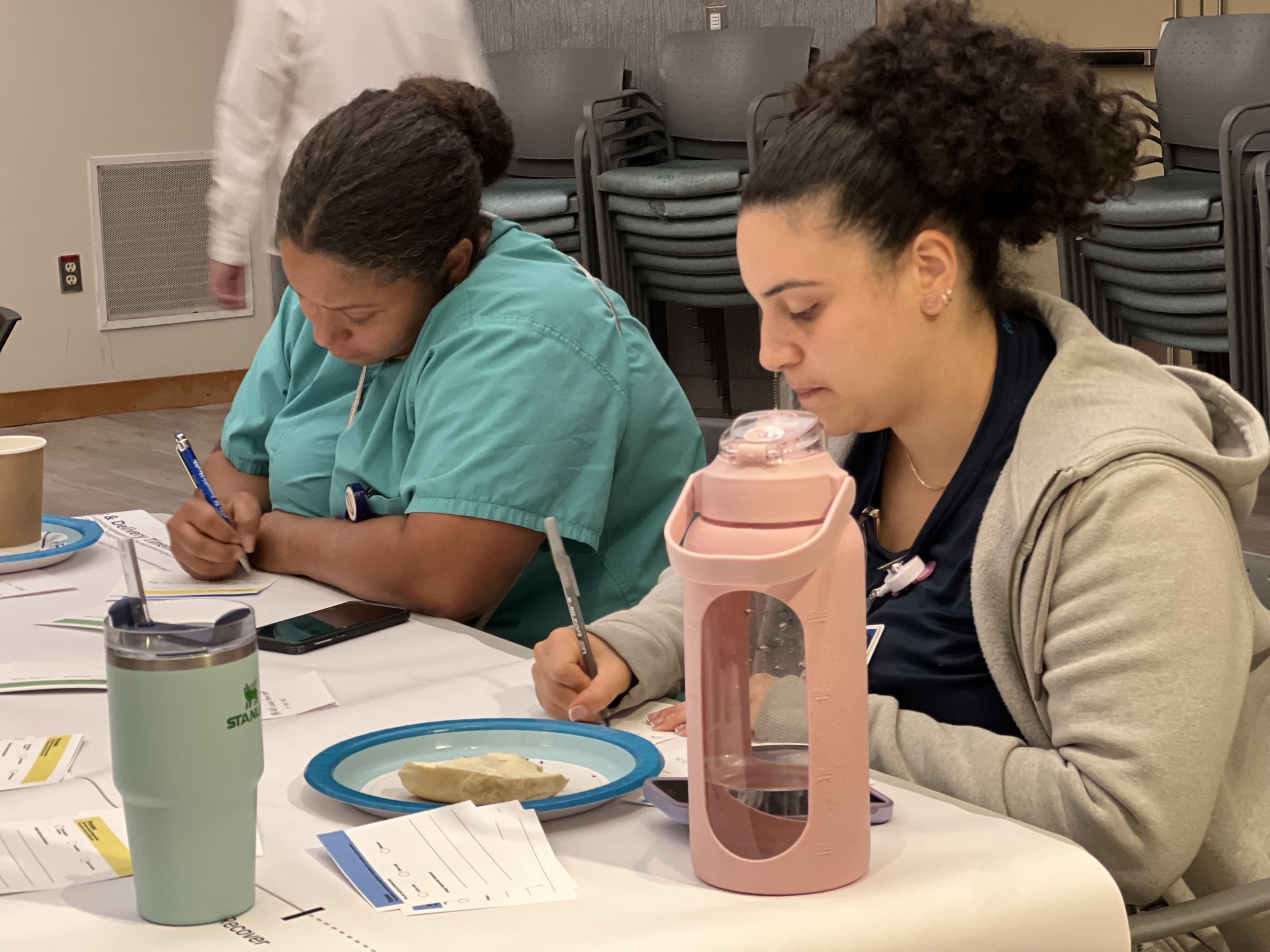
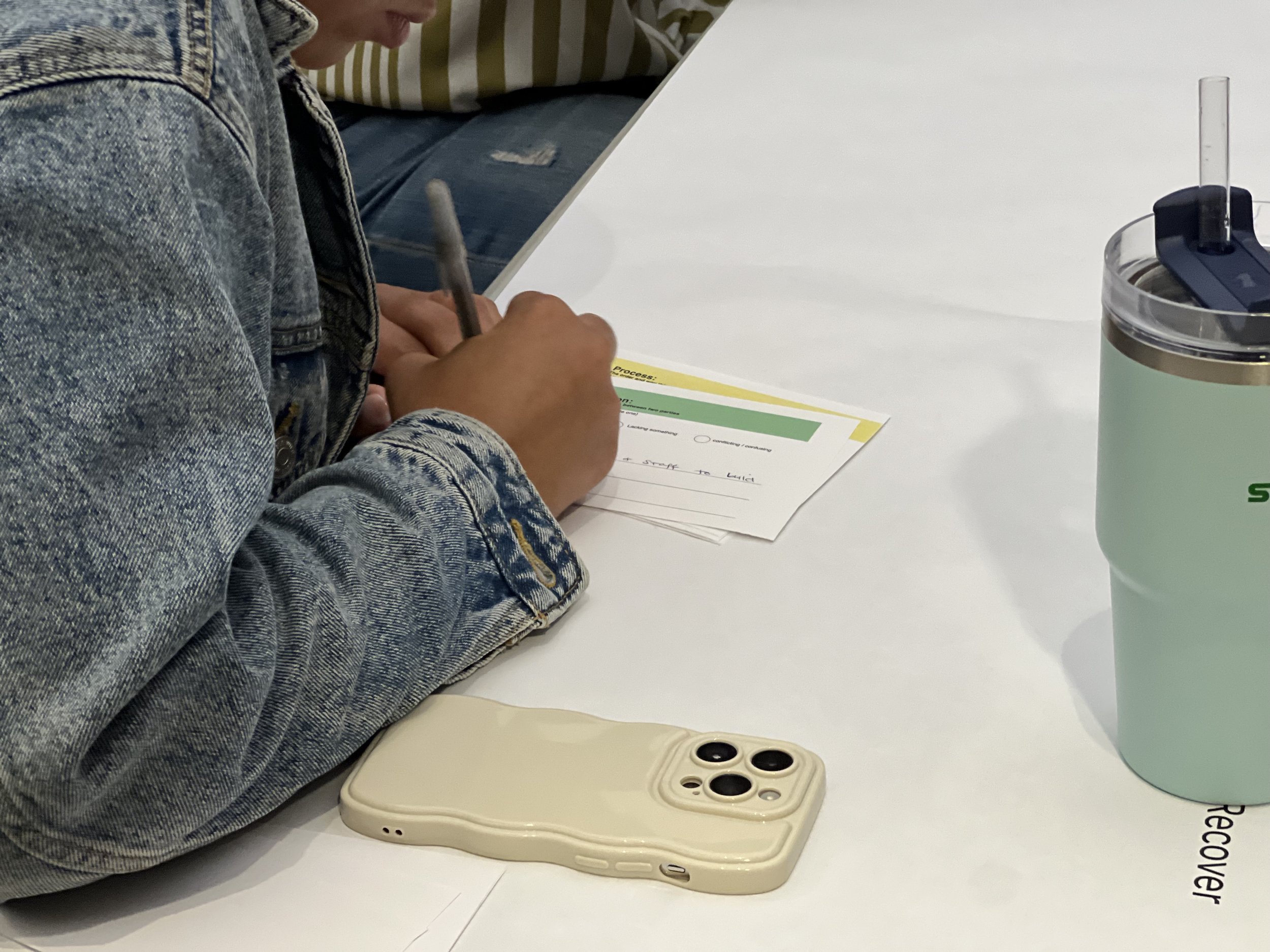

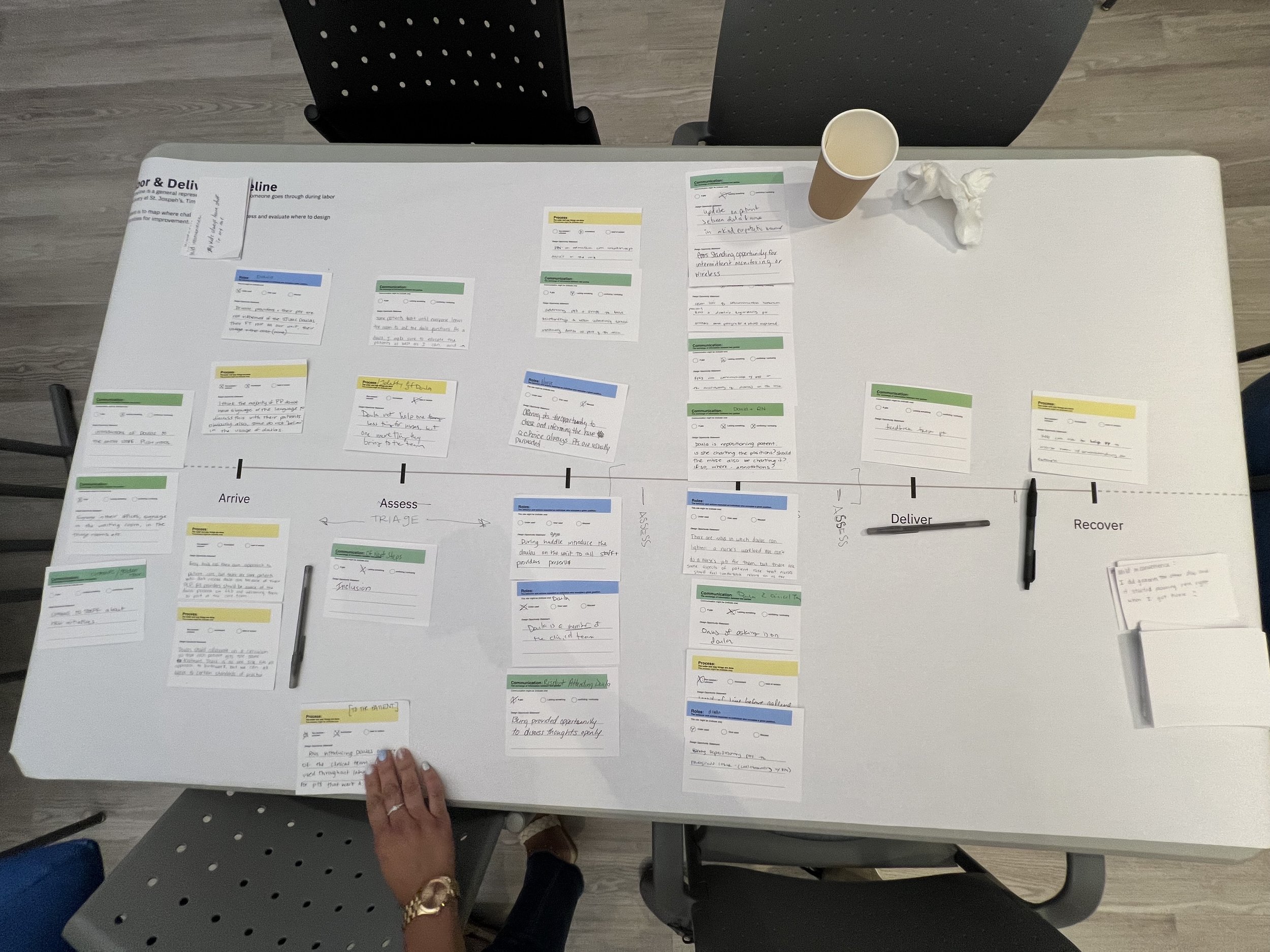
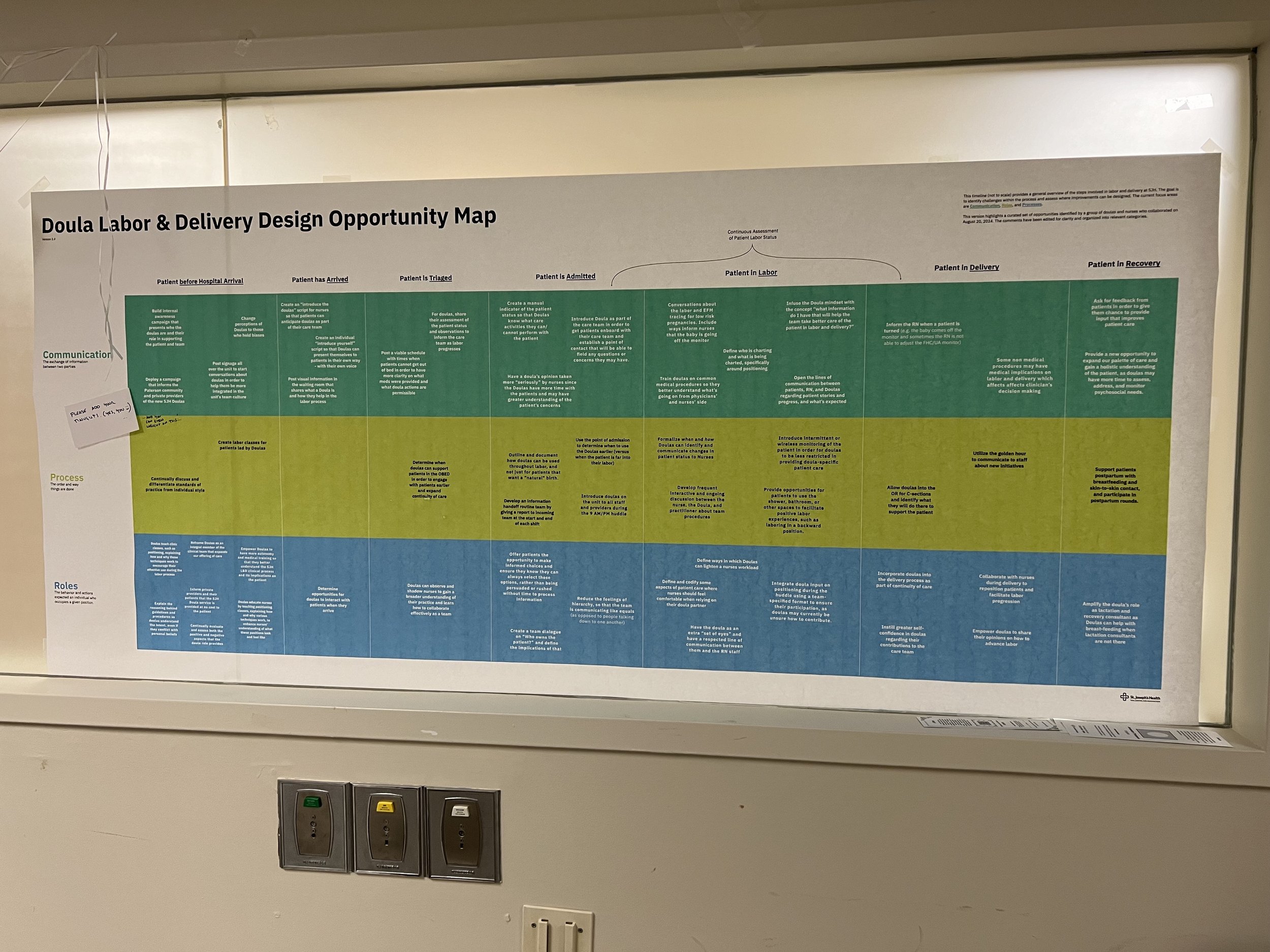
St Joseph’s Labor and Delivery department is piloting a novel hospital doula program. CFI supports this initiative making the doulas not just a Band-Aid® to a system, or a powerless advocate for women, but a critical team member that can contribute unique skills and perspectives to the holistic health care team within SJH. This exists within the hospital system by fostering trust and stronger relationships between moms and doulas before labor and delivery.
One prototype is a newly designed, safe room. This room is only for doulas and women, and has doula specific amenities such as yoga balls, rebozos, and other labor management tools. Close attention has been paid to ensure the design is to the doulas’ specification and needs. It is built to create an inviting environment where doulas can engage in more intimate conversations about pregnancy expectations and unanticipated needs.
Simultaneously, CFI has been working closely with St. Joseph’s labor and delivery team. We facilitated workshops and conversations to communally learn how to incorporate doulas into huddles and work teams. This includes supporting doulas themselves to feel comfortable advocating for their patients in a clinical setting. We have introduced and used design-centric tools like journey maps to visualize a holistic picture of the joys and challenges the team faces as they integrate a powerful group of maternity advocates within the system at St. Joseph’s Health
Lastly, doulas also participate in community events. We have co-designed communication material for events like National Night Out that support doulas in helping them introduce who they are and what they do. Its impact has been felt as the doulas meet their potential clients in the community and have started a community discourse around doulas.
Conclusion
The Paterson Story Salon, The Inquisitor’s Card, and The Doula Connection exemplify our commitment to creating spaces for authentic dialogue and meaningful exchange. Through these initiatives, we hope to inspire a new kind of conversation—one that centers the voices of Black mothers and equips clinicians to meet their needs with empathy and understanding.
The work - while slow – is intentionally process driven to create sustainable roots of trust. With each prototype created, each new community member engaged, and each conversation explored, CFI is demonstrating SJH’s priority to working in partnership with the community. The trust and relationships CFI has developed with individuals in the community is invaluable and will be the bedrock for future systemic change in regard to tackling racial disparities.
Last edited Jan. 24, 2025


